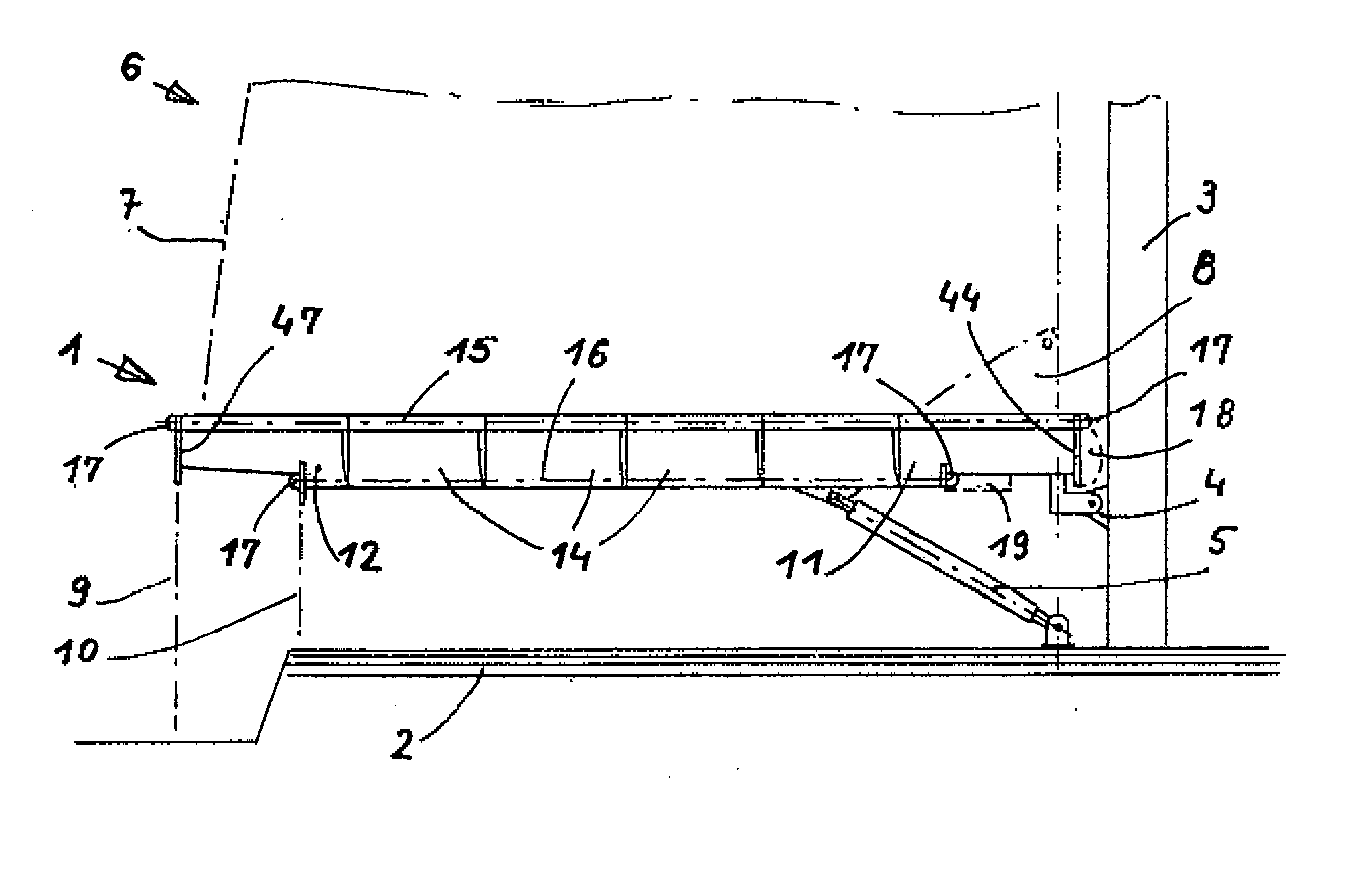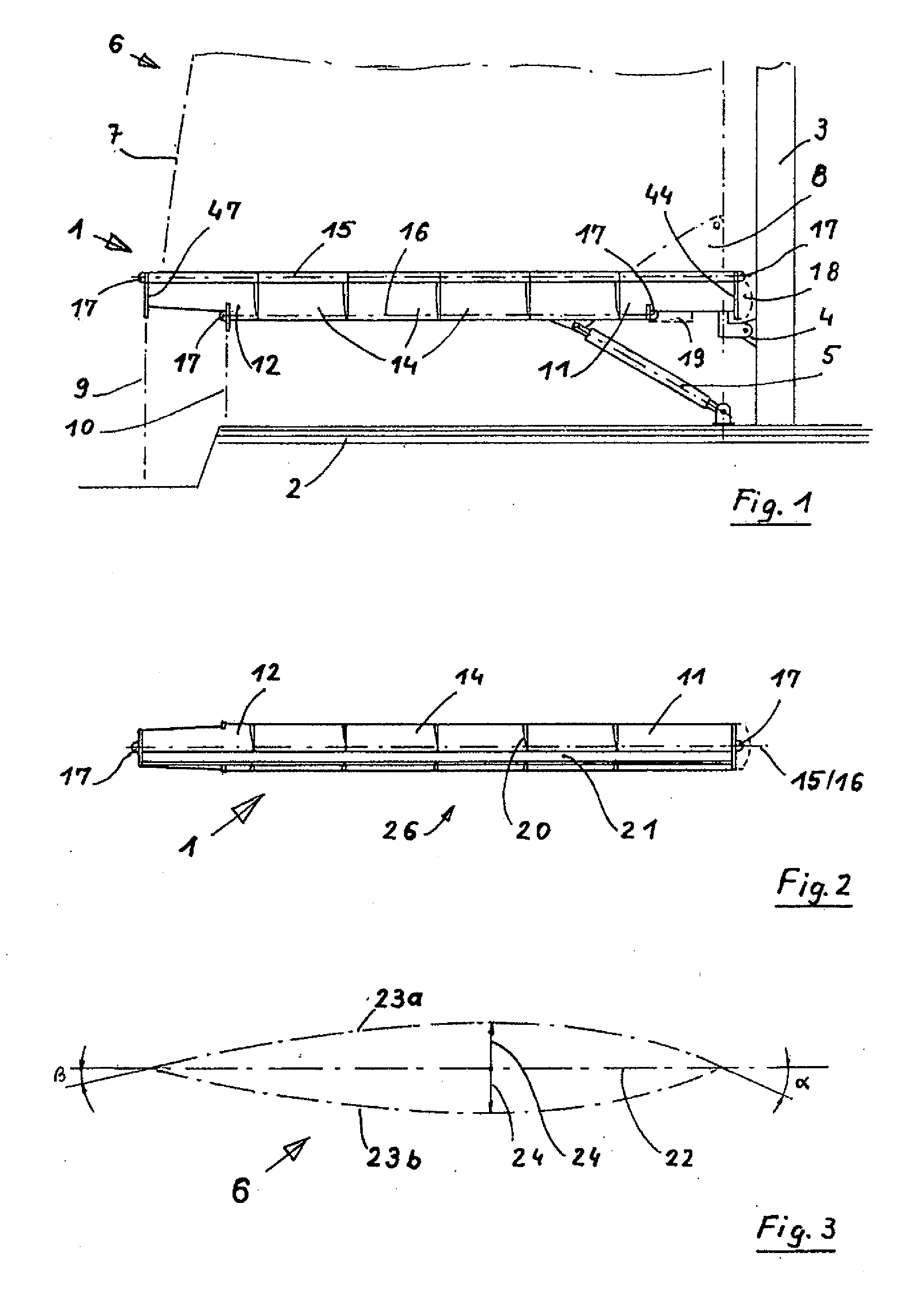Roller reefing boom for sailing ships
a technology for sailing ships and booms, applied in the field of sail booms, can solve the problems of poor sailing properties, poor position, and loss of shap
- Summary
- Abstract
- Description
- Claims
- Application Information
AI Technical Summary
Benefits of technology
Problems solved by technology
Method used
Image
Examples
Embodiment Construction
[0055]FIG. 1 is a side view of a roller reefing boom (1) according to the invention in a possible use position on a vessel (2) after a mast (3) to which it is connected by a gooseneck (4) so as to be deflectable on all sides and is held by a boom support (5) in a substantially horizontal position and at approx. 90° to the mast (3) in order to allow the sail (6) to be unrolled and rolled up.
[0056]Shown above the roller reefing boom (1) is an indicated sail (6) which has, when rolled out, an illustrated possible after leech position (7) and, when rolled in, a sail head (8). Also shown are a possible position of a mainsheet (9) and also a second (10) as an alternative, transferring the sail pull upward to the vessel. The roller reefing boom (1) comprises a plurality of partial segments: the head segment (11), the yardarm segment (12) and a plurality of similar center segments (14) therebetween all forming segment housings (26).
[0057]Illustrated by dot / dash lines is the central position...
PUM
 Login to View More
Login to View More Abstract
Description
Claims
Application Information
 Login to View More
Login to View More - R&D Engineer
- R&D Manager
- IP Professional
- Industry Leading Data Capabilities
- Powerful AI technology
- Patent DNA Extraction
Browse by: Latest US Patents, China's latest patents, Technical Efficacy Thesaurus, Application Domain, Technology Topic, Popular Technical Reports.
© 2024 PatSnap. All rights reserved.Legal|Privacy policy|Modern Slavery Act Transparency Statement|Sitemap|About US| Contact US: help@patsnap.com










